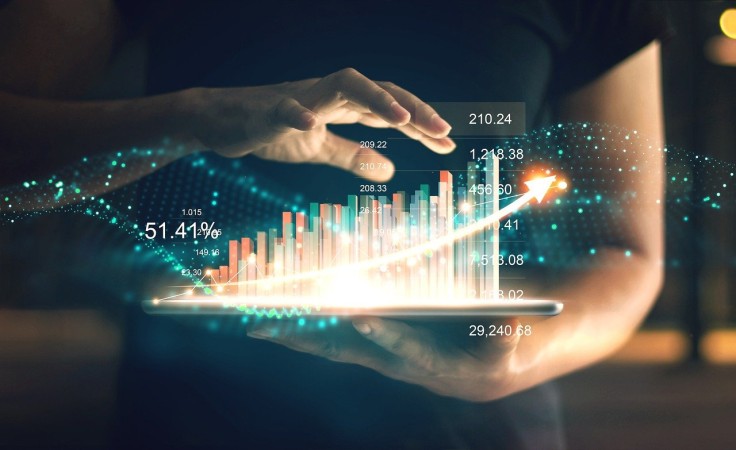
Welcome to the ever-evolving world of cryptocurrencies, where the swings in the value of digital currencies like Bitcoin and Ethereum can seem as unpredictable as the weather. But what if there was a way to make sense of these fluctuations? At the heart of the crypto valuation puzzle is a concept known as market capitalization. In this exploration, we'll demystify how market cap influences the price of cryptocurrencies, ensuring you're equipped to navigate this digital terrain with confidence. Delve into the intricacies of cryptocurrency valuations with Quantum AI, where traders gain clarity from educational specialists on market cap implications and a deep dive into investment education.
The Foundations of Cryptocurrency Valuation
Cracking the Code on Market Capitalization
Market capitalization, or market cap for short, is a term borrowed from the traditional stock market, representing the total value of a company's shares. In the crypto world, it's not much different—think of it as the overall worth of a cryptocurrency.
Calculating it is straightforward: multiply the current price of the coin by the total number in circulation. This figure gives investors a snapshot of a cryptocurrency's relative size and, more importantly, its market position.
But why does it matter? The market cap can be a beacon, guiding investors through the foggy waters of investment choices, highlighting which coins are titans and which are teetering.
What Makes Crypto Prices Tick?
Diving deeper, what exactly fuels the changes in cryptocurrency prices? Several factors pull the strings behind the scenes:
Supply and Demand: The age-old drivers of price. Limited supply and growing demand can push prices sky-high, while the opposite can lead them to plummet.
Market News: Announcements, regulations, and technological breakthroughs can cause prices to swing dramatically.
Volatility: Cryptocurrencies are famous for their rapid price movements.
Dissecting the Market Cap-Price Relationship
The Theory Behind the Numbers
But what does economic theory say about the relationship between market cap and price? At its core, this relationship reflects investor sentiment and market psychology. When confidence in a cryptocurrency is high, both its price and market cap can soar.
Conversely, when confidence wanes, both can fall. This dance is influenced by a variety of factors, from technological advancements to regulatory news, shaping the perceived value of a cryptocurrency.
Learning from the Past
History is littered with examples of how this relationship plays out in the real world. Take, for instance, the meteoric rise of Bitcoin in 2017, followed by a dramatic fall in 2018.
These movements were not just about changes in investor sentiment but were also reflections of broader market dynamics, including regulatory shifts and technological advancements.
Such case studies remind us that while the market cap-price relationship may seem straightforward, it operates within a complex ecosystem of factors.
The Ripple Effects of a Doubling Market Cap
When a cryptocurrency's market capitalization doubles, it's tempting to assume that its price will similarly increase. However, the relationship between market cap and price is not direct or straightforward.
Market cap is calculated by multiplying the current price of the cryptocurrency by its total circulating supply.
Thus, an increase in market cap can occur due to an increase in the currency's price, an increase in the supply, or a combination of both.
A significant increase in market cap typically indicates rising investor interest and can be seen as a sign of growing confidence in the cryptocurrency.
When the market cap grows due to price appreciation, it often attracts more media attention and investor interest, which can lead to further price increases as new investors enter the market, hoping to capitalize on the trend. This speculative demand can drive the price up temporarily.
However, the increased market cap also brings challenges. If the rise in market cap is too rapid, it might lead to overvaluation concerns, making the cryptocurrency susceptible to sharp corrections if the market sentiment changes or if there is negative news affecting investor perception.
Moreover, a higher market cap cryptocurrency may become less volatile as it requires more capital to move the price significantly. This might attract more institutional investors who prefer stability over the high volatility seen in smaller cap coins.
Additionally, if the increase in market cap is primarily due to an increase in the circulating supply—for instance, through a coin offering or a decision by the creators to release more coins—the price per coin might not necessarily increase. In fact, it could decrease if the demand doesn't keep up with the increased supply.
Conclusion
Understanding the relationship between market cap and price is crucial for anyone looking to navigate the crypto markets successfully. This relationship is complex, shaped by factors ranging from investor sentiment to regulatory changes. Conduct thorough research, stay informed about market developments, and consider seeking advice from financial experts. With a solid grasp of these concepts, you'll be better equipped to make informed decisions in the dynamic world of cryptocurrency.









